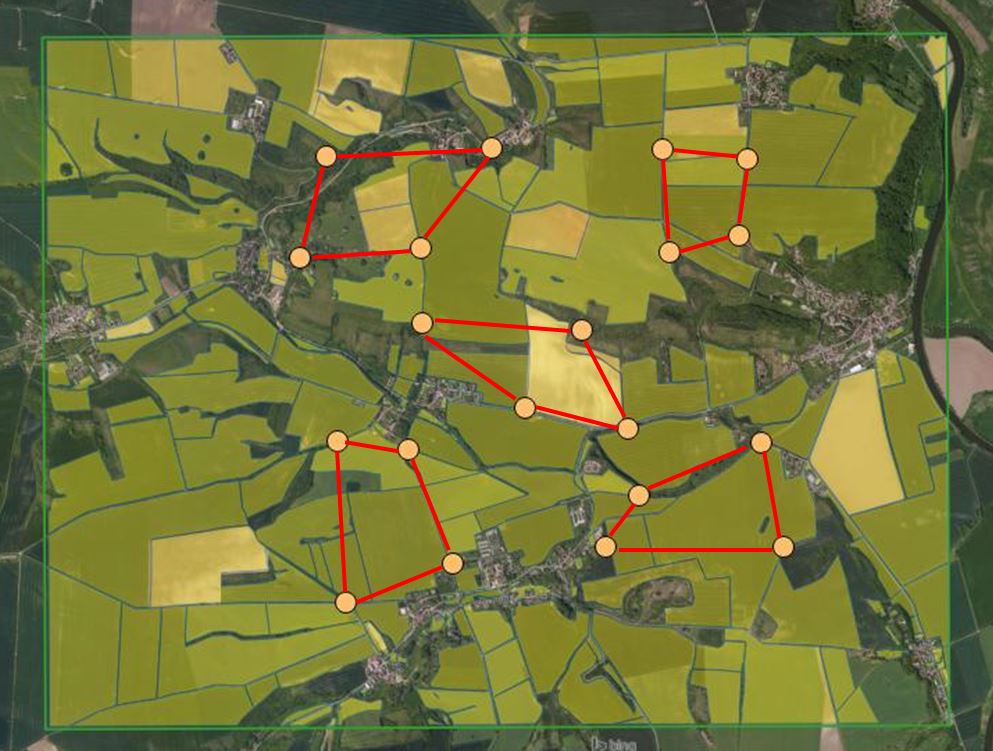Bird Monitoring
Bird communities in agriculturally dominated landscapes in Saxony-Anhalt (Germany) were monitored according to the point count method (see Bibby, C.J. (2000) Bird census techniques. Academic Press, London). A central core area of 3 × 3 km within each sample site was divided into five square cells of 1 km2 each according to a checkerboard grid. Within each of these 5 cells, 4 observation points were selected and at each point all singing, calling and seen bird species were registered within a radius of 250 m for 5 minutes. Surveys started around sunrise and ended about three hours later. A bird survey within one year was performed with three visits in the following periods: (1) 1-30 April, (2) 1-20 May, (3) 21 May-20 June. Based on the birds recorded in the field, the observed bird numbers at each point were translated into territory numbers per species as an expert guess.
Summary
- Aim: to register bird communities within 9 km² in a single morning session
- Sampling points: 5 quadrats of 1x1 km with 4 points each; together 20 points, each with 500 m distance, 5 minutes watching (Point-stop method)
- Sampling dates: 3 times (April, May, June)
- Sampling time: about sunrise + 3 hours
- Noting of singing, calling and seen birds; adding behavioural remarks
- Frequency: every 3 years
 Checkerboard grid sampling design (ideal setting)
Checkerboard grid sampling design (ideal setting)
 Checkerboard grid sampling design in Friedeburg (real setting)
Checkerboard grid sampling design in Friedeburg (real setting)